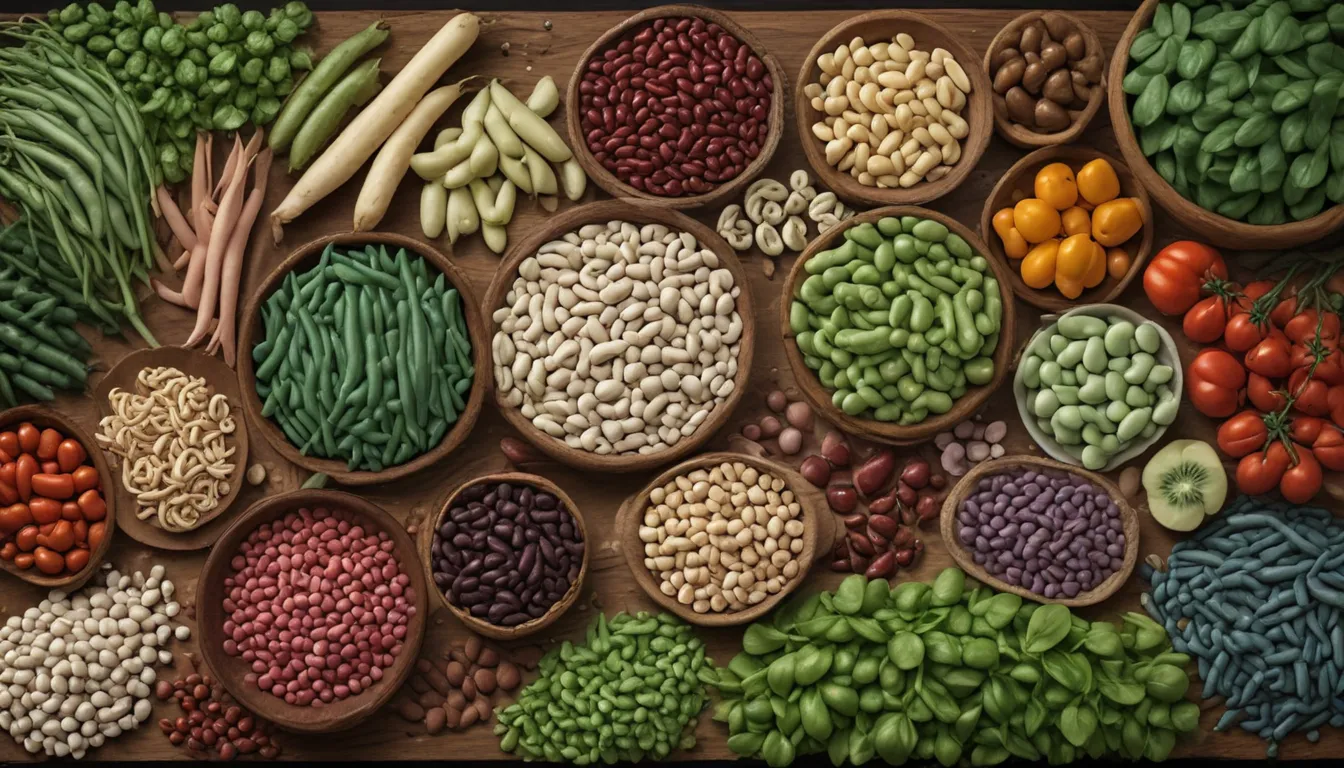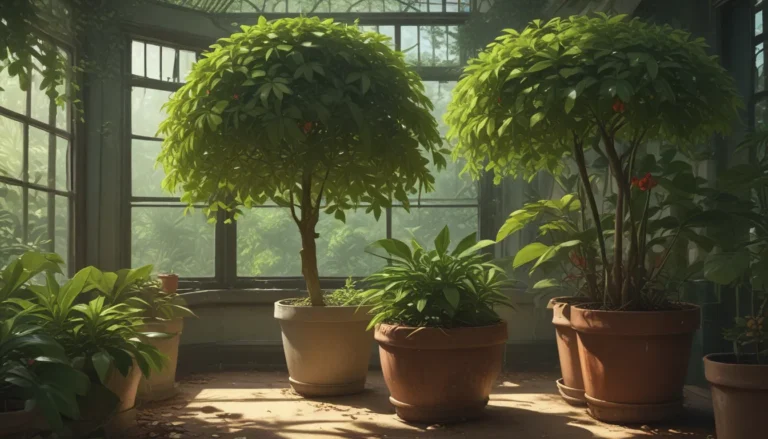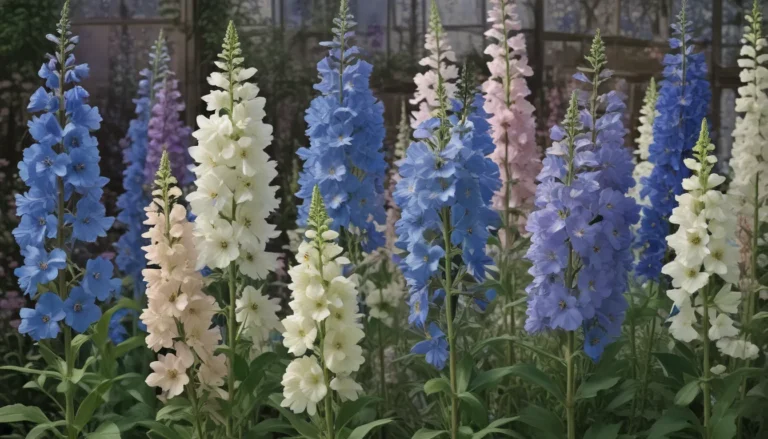A Comprehensive Guide to Different Types of Edible Beans for your Home Garden

Welcome to the wonderful world of beans – where the possibilities are endless, and the flavors are delightful! If you are looking to add some diversity to your garden, then beans are the perfect choice. In this in-depth guide, we will explore 13 different types of edible beans that you can consider growing. From bush varieties to pulses, seeds, shelling varieties, and more, we have everything you need to know about these legumes.
Why Grow Different Types of Beans?
Before we dive into our list of bean varieties, let’s take a moment to understand why you should consider diversifying your bean plantings:
- Seed Saving: Growing different species of beans can help prevent hybridization, making it easier for you to save seeds while growing multiple types without worrying about cross-pollination.
- Climate Adaptation: Beans come from different origins and are best adapted to various climates. By growing a variety of species, you can choose beans that thrive in your specific growing conditions.
- Companion Planting: Beans are excellent companion plants as they can fix nitrogen from the air into the soil, reducing the need for artificial fertilizers.
- Culinary Variety: Having a range of bean options in your garden gives you more choices for plant-based protein in the kitchen, allowing you to explore new recipes and flavors.
Now, let’s explore the different types of beans you can grow at home:
Bush Varieties
Bush varieties of beans have a more compact growth habit, usually reaching about 18 to 24 inches tall. These low-growing plants have a determinate growth pattern and do not produce long vines.
Pole Varieties
Unlike bush varieties, pole beans have vines that can reach several feet in length, limited only by the length of the growing season. These varieties require trellising for optimal growth and are perfect for maximizing vertical growing space.
Pulses
The term “pulse” refers to certain types of edible legumes that are dried for food use, including beans, peas, and lentils.
Seeds
Bean seeds are dry beans found inside the bean pods, making them an essential component of propagating these legumes in your garden.
Shelling Varieties
Shelling varieties of beans have pods that are too fibrous to eat and are typically removed or “shelled” from their pods for consumption. Some shelling varieties can be eaten fresh, while others are allowed to mature and dry on the plant.
Now that we have covered the basics, let’s dive into our list of 13 different types of beans that you can grow at home:
1. Adzuki
Adzuki beans, scientifically classified as Vigna angularis, are round legumes widely used in Asia. These warm-season crops produce bright yellow flowers and cylindrical pods with round seeds that can be harvested young for fresh eating or left to mature for dry use.
If you want to try growing adzuki beans in your garden, consider heirloom varieties like ‘Dainagon’ from Japan, available from True Leaf Market.
2. Common Beans
Common beans, or Phaseolus vulgaris, are familiar legumes used as fresh green beans or dried beans. With thousands of cultivars available, you can choose from bush or pole varieties depending on your gardening space and preferences.
For fresh eating, varieties like ‘Tavera’ (bush) and ‘Kentucky Wonder’ (pole) are popular options. When it comes to dried beans, consider varieties like ‘Borlotto’ for culinary versatility.
3. Cowpeas
Also known as southern peas, cowpeas (Vigna unguiculata) are native to Africa and come in bush or vining varieties with cylindrical pods containing cream-colored seeds.
Varieties like ‘California Blackeye #5’ and ‘Pinkeye Purple Hull’ are popular choices for both fresh and dry use, offering a unique flavor to your dishes.
4. Fava Beans
Fava beans, or Vicia faba, are cool-season legumes with large compound leaves and white flowers. These upright plants produce pods with one to five seeds each, ideal for harvesting young for fresh consumption or leaving to dry for storage.
If you’re interested in growing favas, consider heirloom varieties like ‘Windsor’ for delicious pods and beans in your garden.
5. Garbanzo Beans
Garbanzo beans, or chickpeas (Cicer arietinum), are cool-season crops used in a variety of culinary dishes, from hummus to soups. These compact plants produce hairy pods with one seed each, making them a versatile protein source for your meals.
If you want to grow your own garbanzo beans, look for varieties like ‘Golden Dragon’ or ‘Black Sicilian’ for home cultivation.
6. Lima Beans
Lima beans, or Phaseolus lunatus, come in large or baby varieties and can be grown as annuals or short-lived perennials in certain zones. These warm-season legumes produce pods with white or yellow flowers, perfect for fresh or dry use in a variety of dishes.
Consider varieties like ‘Christmas’ for a unique flavor profile that may change your opinion on lima beans.
7. Mung Beans
Mung beans, or Vigna radiata, are warm-season legumes related to cowpeas and adzukis. These bush or pole varieties produce yellow flowers and pods with green, brown, or yellow seeds ideal for sprouting or cooking.
While garden seeds for mung beans may be hard to find, sprouting seeds can be an alternative for home cultivation.
8. Pigeon Peas
Pigeon peas, or Cajanus cajan, are heat-tolerant legumes native to India used in a variety of dishes. These plants can be grown as annuals or short-lived perennials in specific zones and produce pods with an average of five to six seeds for culinary use.
Consider growing pigeon peas as a hedge or a food crop depending on your gardening needs.
9. Runner Beans
Runner beans, or Phaseolus coccineus, are edible legumes with ornamental value due to their striking flowers. These warm-season plants produce red flowers and long pods perfect for fresh eating or drying for storage.
For a unique addition to your garden, try varieties like ‘Scarlet Emperor’ for beautiful blooms and delicious beans.
10. Soybeans (Edamame)
Soybeans, or Glycine max, are popular for their culinary versatility, used to create tofu, soy milk, and more. Edamame, or vegetable soybeans, are harvested green and enjoyed fresh or dehydrated in a variety of dishes.
Consider growing early-maturing varieties like ‘Chiba Green’ for a homegrown supply of delicious edamame.
11. Tepary Beans
Tepary beans, or Phaseolus acutifolius, are highly heat-tolerant crops suitable for arid climates. These legumes produce pods with two to seven seeds each, making them a valuable food source in drought-prone areas.
Try varieties like black tepary for unique flavor and adaptability to harsh growing conditions.
12. Winged Beans
Winged beans, or Psophocarpus tetragonolobus, are exotic legumes native to Tanzania with edible pods and flowers, perfect for culinary experimentation. These heat-tolerant plants produce pods with four “wings” containing nutritious seeds ideal for fresh or cooked use.
For a touch of the exotic in your garden, grow winged beans like ‘Goa beans’ for a truly unique culinary ingredient.
13. Yard-Long Beans
Yard-long beans, formally known as Vigna sesquipedalis, are heat-tolerant legumes with long, thin pods perfect for fresh consumption. These vining plants produce pods of up to four feet in length, making them an eye-catching addition to your garden.
Consider varieties like ‘Orient Wonder’ for a unique and flavorful addition to your garden.
Conclusion
Congratulations on your journey through Beanland! By exploring the diverse world of beans, you have opened up a world of culinary possibilities and gardening adventures. Whether you’re a seasoned gardener or a beginner, growing different types of beans in your garden will not only add variety to your meals but also enrich your gardening experience.
So go ahead, pick a few bean varieties that resonate with you, and start your bean-themed gardening adventure. From fresh salads to hearty stews, these legumes offer endless opportunities for creative cooking and sustainable gardening. Happy bean growing!





